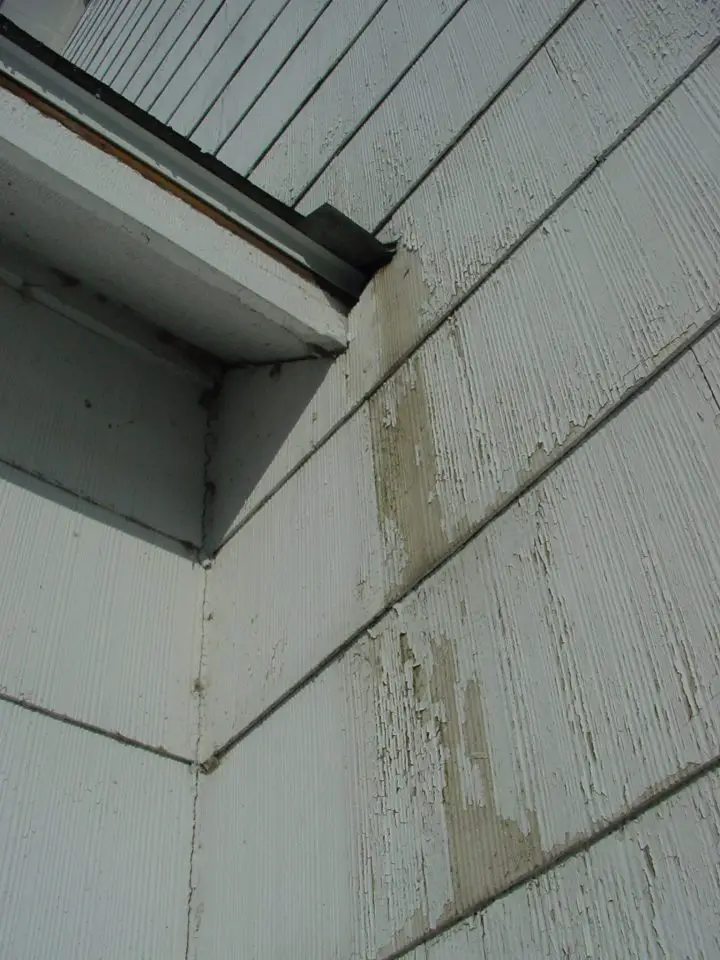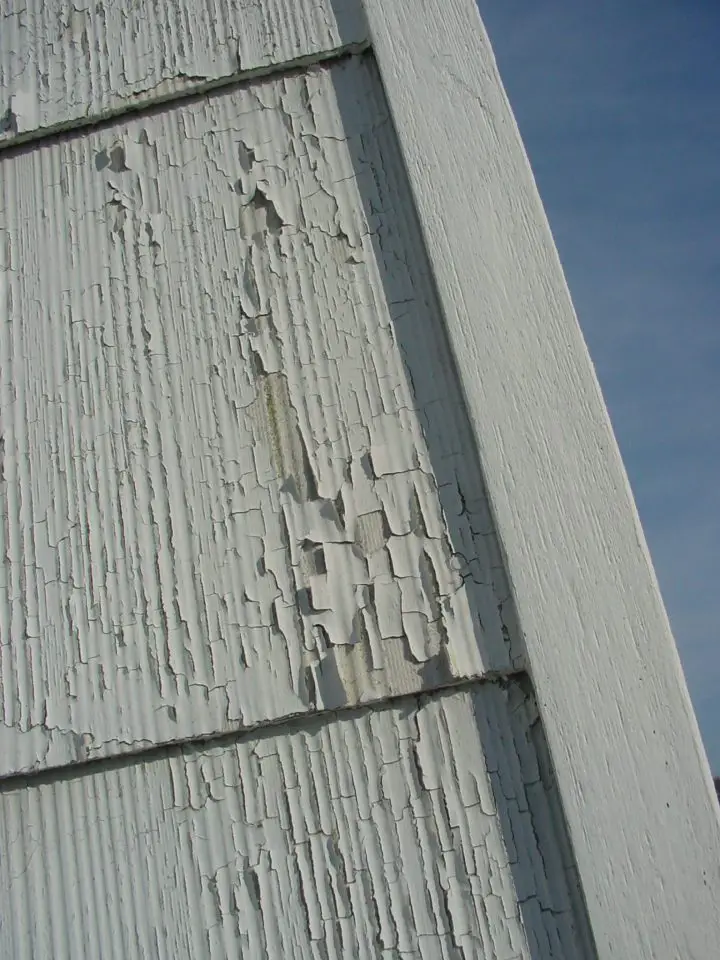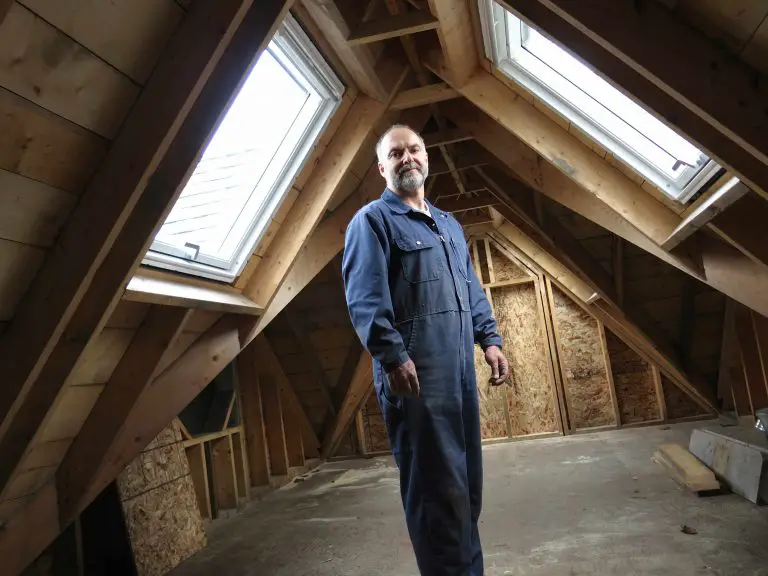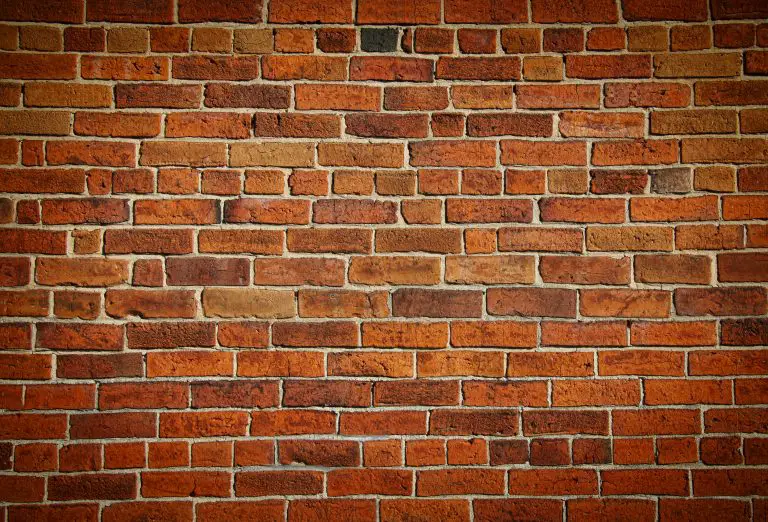
These asbestos shingles were popular until the 1960s and they do last a long time. Repainting or removal poses health risks you need to know about.
Is Asbestos Siding Safe?
Every so often I get a homeowner asking me an asbestos siding question that goes something like this. It’s a good question and lots of people have to deal with issues like this one:
“What can I do about the asbestos wall shingles applied to the outside of my 1950s house? I need to understand the relative risks associated with keeping the shingles as-is, refinishing them or replacing them with new siding.”
The issue here is asbestos and the risks of serious lung diseases it can cause. And make no mistake, asbestos is dangerous. Even a single airborne fiber of the most dangerous types of asbestos can eventually cause a particular form of lung cancer if inhaled. It’s pretty serious, but according to Health Canada, one of the world’s leading sources of unbiased information on the subject, “if asbestos fibres are enclosed or tightly bound in a product, for example in asbestos siding or asbestos floor tiles, there are no significant health risks.”
Options for Dealing With Asbestos Siding
This is why leaving the shingles undisturbed and in place on your walls is a safe option. As long as you don’t drill, sand or brush the shingles, the asbestos remains encapsulated in a type of mortar-like base that makes it harmless. You’d still want to wear a respirator working with the stuff, just to be safe, but that’s just an added precaution. The challenge is how to maintain this kind of siding without creating airborne asbestos particles. That’s not so easy.
Repainting always involves some kind of sanding or brushing to remove loose paint. And while this operation can be safely completed on wood or other solid siding options, it’s not so easy when working with asbestos shingles. So, what can you do?
It is possible to gently brush off the old, flaking paint while keeping the siding damp to prevent dust. For this you’ll need to where an HEPA-rated respirator, disposable overalls and gloves, then work over tarps placed on the ground to catch the flakes of paint since they’re guaranteed to contain lead. Lead paint wasn’t outlawed until 1978, so it’s sure to be present on siding going back to the 1950s. Let the siding dry, then prime and paint with the best exterior latex you can find.
Covering old asbestos shingles with new siding may seem like an option too, but it’s not easy to do safely. Asbestos shingles are relatively strong but brittle. You can’t drive screws and nails through them without pre-drilling. This would trigger dust and asbestos dust is a problem, as I’ve mentioned. No, installing new siding over the old asbestos siding isn’t a viable option.

Removing Asbestos Siding
The approach of removing the old shingles and replacing them with new siding is an option that many homeowners have pursued, though probably not as safely as they should. As a homeowner working on your own house, there are no legally binding safety precautions you need to adopt for yourself in most places. That said, you really do need to wear a respirator and a completely sealed set of disposable overalls to stay safe. You also need to dispose of the old shingles as toxic waste. If you do decide to go the DIY route, and you want to maintain a traditional character of your home, consider new factory-finished wood siding or fiber cement siding. Either of these options offer low-maintence and they’ve much better than fragile and flexible vinyl siding.
It always amazes me how we as humans can blindly plunge into danger, completely ignorant of realities that come to light years later. Asbestos is just one example. In the case of asbestos siding, it’s not quite as dangerous as other products made with this material, but still worthy of respect.
What would I do if I had the kind of asbestos siding you see here, badly in need of paint? My approach of choice is removal and replacement, but only if the siding looks too bad to keep using.
Got some old surfaces you want to strip paint from? Perhaps some old woodwork or furniture? Lead paint is a definite possibility. Click here for a lesson on stripping surfaces safely.












